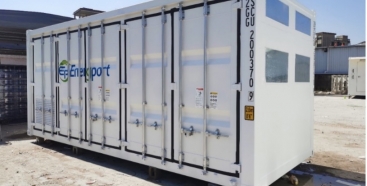
By Demetra Tzamaras
The effects of climate change are no longer abstract. They are here now – evident and undeniable in the ever-growing annual California wildfire season. As the planet steadily warms, it produces drier and hotter conditions each year that are ideal for wildfires to spark, especially in California. According to CalFire’s “Top 20 Most Destructive California Wildfires” list, over half of the most damaging wildfires occurred within the last five years. Part of the larger Sonoma County Junior College District and located within PG&E service territory, Santa Rosa Junior College (SRJC) sits in a region of Northern California that has been significantly impacted by wildfires. In 2017, more than 400 students and 50 employees lost their homes to the Tubbs electrical fire.
The most direct action to mitigate future risk to community health and safety is to reduce greenhouse gas (GHG) emissions while also preparing communities to withstand inevitable climate change impacts now. The 100 Percent Clean Energy Act of 2018 established a statewide goal to meet all electricity needs with renewables and zero-carbon resources by 2045, reaching a threshold of at least 60% by 2030. Integration of microgrid architectures and distributed energy resources to the California power distribution system provide an opportunity to achieve both climate change mitigation and adaptation goals. It is this crucial balance of resiliency and greenhouse reduction goals that are the primary drivers for the SRJC urban microgrid demonstration project.
Prioritizing environmental impact with cutting-edge technology
The goals of the project – to provide at least 40% of the campus electricity load with emissions-free solar power, reduce the campus’ peak electricity load, and optimize energy use – are all directly tied to addressing climate change, specifically in terms of GHG emissions. The solar generation and energy storage systems integrated into the campus microgrid in this project will allow the college to replace a portion of its energy load with clean solar generation in regular, “blue sky” operating conditions. Additionally, the renewable microgrid system replaces existing diesel back-up generators in the event of an outage. The emissions-free electricity generation from on-site solar is expected to reduce the campus carbon dioxide (CO2) emissions by over 1,000 metric tons per year. In addition to the emissions reductions from displacing energy drawn from the utility distribution grid, the energy use optimization features of the microgrid system will reduce the peak electricity load. The estimated overall annual electricity consumption reduction is up to 57% of current electricity use. The measured energy savings data metered during the measurement and verification phase of the project will be used to calculate net GHG emission reductions.
Historically, implementing renewable energy resources into a microgrid system has been prohibitive due to the unpredictability of renewable resources which has led to the misconception that microgrids can’t have a high renewable content. However, advanced microgrid controllers, like the PXiSE controller in this project, can help account for these uncertainties by using control signals to communicate with all devices in the system and provide sub-second, real-time frequency and voltage support locally and to the utility distribution grid. The SRJC microgrid will demonstrate the capabilities of a flexible, clean microgrid system to provide reliable power.
Building a more resilient community to combat climate change impacts now
Additionally, the project aims to provide resiliency benefits by allowing the campus to isolate from the grid in the event of an outage – planned or unplanned – and continue to provide emergency services to the students, faculty, and the local community. The project team designed the equipment and communication protocols of the microgrid components to provide a “blinkless” transition between grid-interconnected operation (grid-following) and islanded operation (grid-forming). This smooth transition between operating modes will limit interruptions to campus activities and allow the facilities on campus to remain a resource to students, faculty, and the surrounding community in the event of an outage.
Measuring resilience
Resilience is important to adapt to climate change impacts, but it is a challenging benefit to quantify compared to other benefits like environmental impact and monetary gains which are easily measurable with emissions reductions and cost savings, respectively. Through the design and modelling phase of the SRJC microgrid project, the team measured resiliency benefits as the monetizable value of unserved load as calculated by weekly student contact hours (how many hours a particular building is occupied) and loss of load value. These metrics are intended to capture the economic value of maintaining classroom attendance and assess the revenue lost due to campus shutdowns. For example, with an average revenue of about $379k/day, a three-day outage, such as those experienced during recent wildfire events, represents up to $1.1 million in lost revenue costs.
The industry is currently exploring methodologies for measuring resiliency that do not simply tie directly to cost savings and instead incorporate the more qualitative impacts of a resilient energy system. The concept of the “value of resiliency” is an on-going topic of conversation tied to the benefits of microgrid and other such DER technologies, and it is one of the primary focuses of the on-going CPUC proceeding, R.19-09-009, pursuant to Senate Bill 1339. The project team will have an opportunity to share lessons learned from the SRJC microgrid project and contribute to this dialogue, especially as the project enters its value assessment stage next year.
Learn more!
The SRJC microgrid project aims to demonstrate the diverse environmental, social and economic values available to a campus microgrid project and provide a road map for a replicable project on similar college campuses. The project team posts project progress, lessons learned and reports here on the project website.